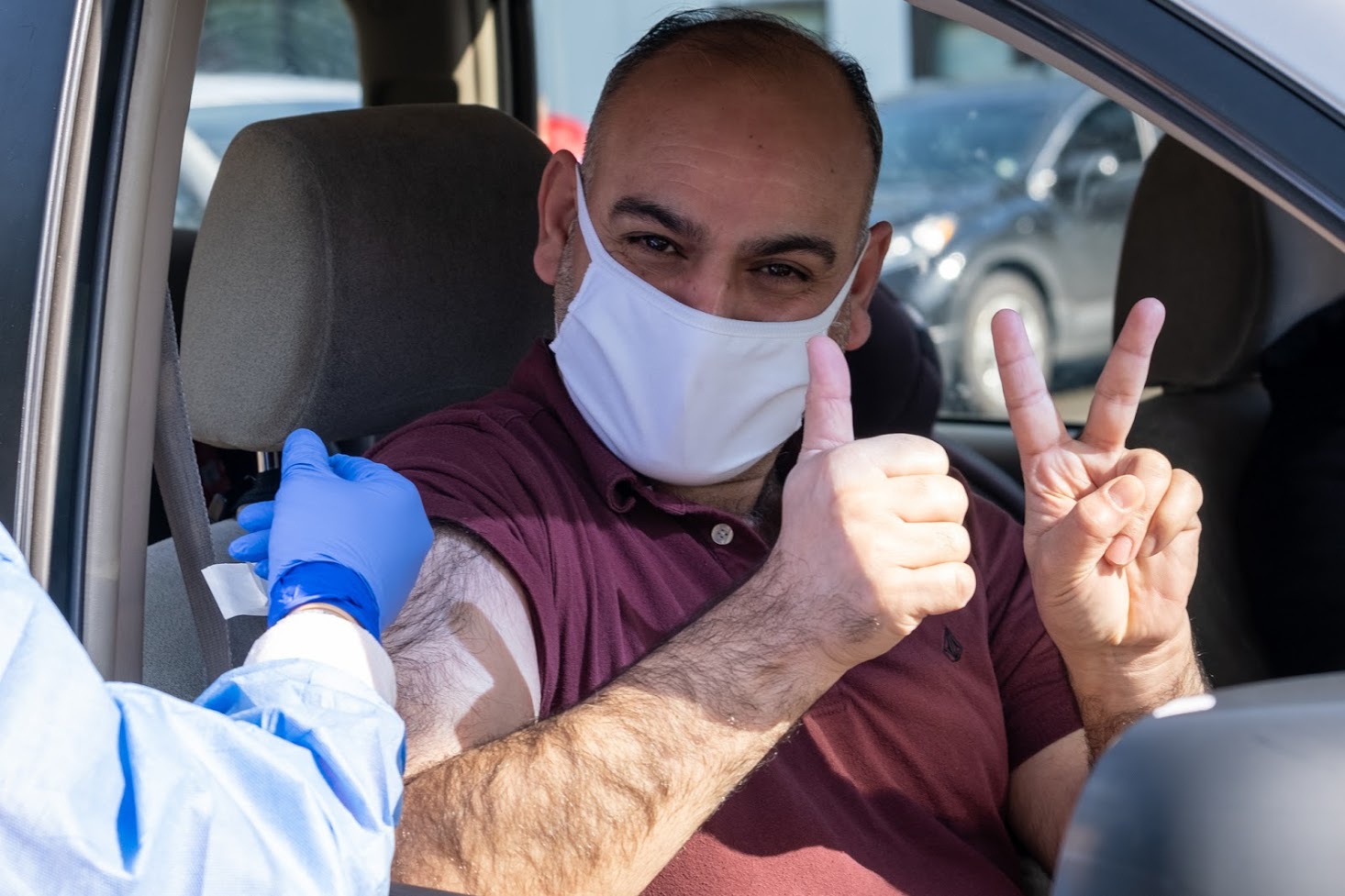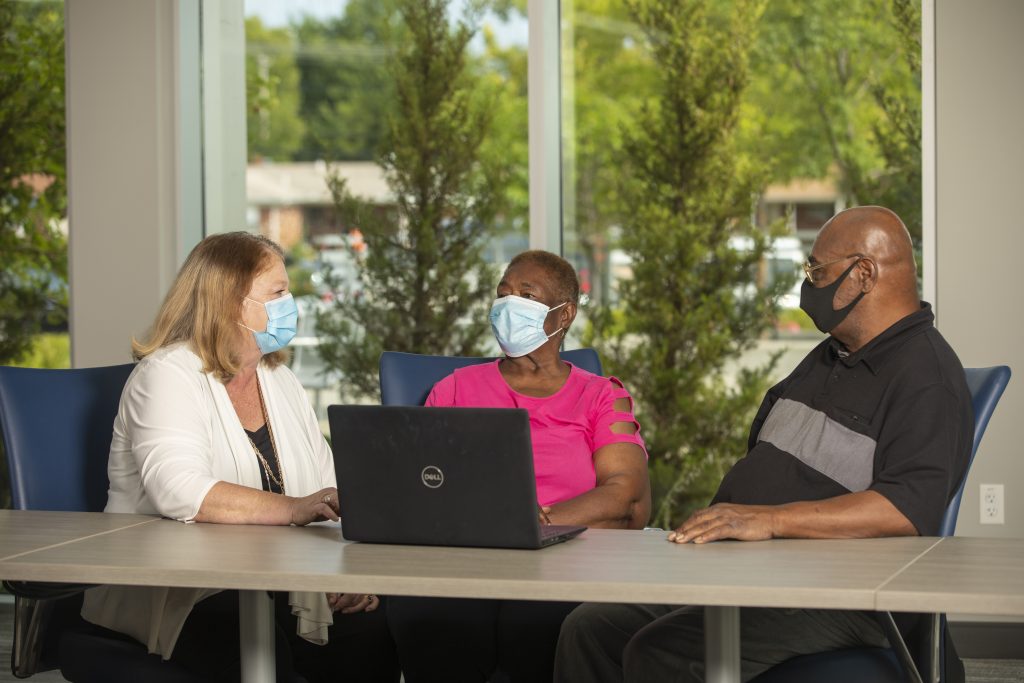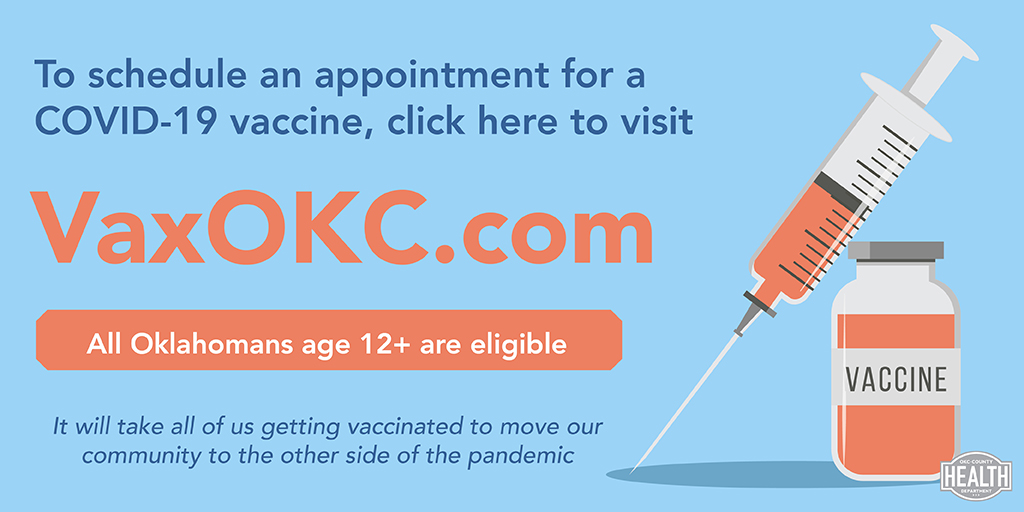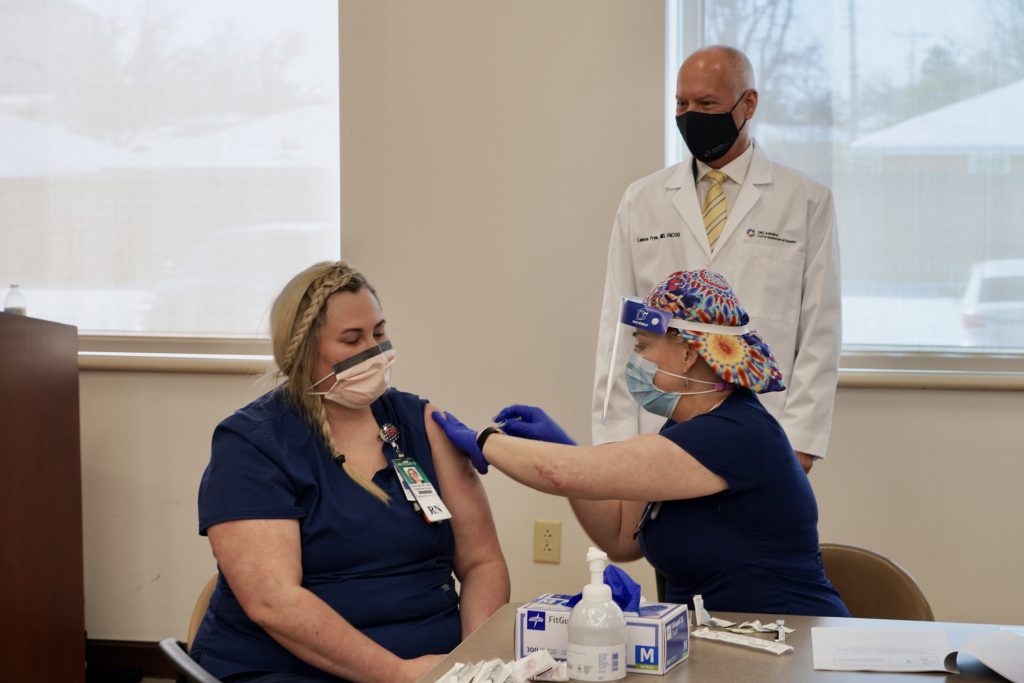
In Oklahoma, a ‘mad rush’ for vaccines soon faded. How more residents are once again booking shots.
Vaccinations are climbing in Oklahoma, offering a promising shift in the fight to curb COVID-19 after months when the Sooner State’s immunization rate lagged near the bottom nationally. While health officials in that state and across the U.S. are still working to achieve vaccination goals, experts see some hope in the latest numbers.
Across Oklahoma, health care professionals administered more than 360,000 coronavirus shots during August, a 91% increase compared to the number of doses given during July, according to data from the Centers for Disease Control and Prevention. Many of those recipients booked their immunizations through an online scheduling platform created by Microsoft.
“This is movement in the right direction!” wrote Buffy Heater, assistant deputy commissioner of the Oklahoma State Department of Health, in an email.
Oklahoma still ranks 40th out of 50 states plus the District of Columbia for the portion of its population that’s fully vaccinated (43.8%). But the recent immunization surge there has started to resemble the frenzied days of January when Oklahomans 65 and older first became vaccine eligible.
As demand spiked in Oklahoma at the start of the year, Tulsa-based senior services provider Eileen Bradshaw relied on the Microsoft Vaccination Management platform to schedule COVID-19 shots for vast numbers of her clients who lacked internet access or tech skills.

Eileen Bradshaw, left, and her organization helped Tulsa residents Alice and Terry Everidge book their vaccinations through the Microsoft scheduling portal. (Photo by Scott Miller)
Built on the Microsoft Power Platform, the scheduling portal helps governments and health care agencies set up and run vaccination sites at hospitals, pharmacies and mobile clinics, and at mass immunization sites like malls and churches. Residents use the site to book their appointments.
“We started getting literally thousands of phone calls. Folks really wanted the vaccines but weren’t sure how to register,” recalls Bradshaw, president and chief executive officer of LIFE Senior Services. “Age is a big risk factor for COVID. Some were panicked, afraid the vaccines were going to run out.”
Working from a makeshift office in her laundry room (her husband and daughter also were working from home), Bradshaw collaborated with colleagues and volunteers throughout the state to book vaccinations for older residents.
She and members of her nonprofit group answered a weeks-long blitz of phone calls from seniors, entered all that client information into the Microsoft portal and used the system to register nearly 11,000 Oklahomans for their shots.

Eileen Bradshaw. (Photo by Scott Miller)
“A lot of folks told us they felt like we saved their lives – and also their sanity because they finally could see their grandchildren,” Bradshaw says.
The same urge to build immunity seems to be back, now with younger residents.
Daily vaccination numbers in Oklahoma abruptly soared starting July 27 when 17,212 doses were administered – triple the daily average. That same day, the CDC recommended that fully vaccinated people start wearing masks in public indoor settings in high-transmission areas as the delta variant continued to spread across the U.S. and abroad.
Oklahoma health officials were ready to fill the need.
“The (Microsoft) solution is allowing folks to connect to their local vaccine centers to book vaccination appointments,” Heater said on Aug. 2.
Elsewhere, health officials in Baltimore, Maryland, Montgomery County, Pennsylvania, King County, Washington, the District of Columbia, the state of New Jersey – and as far away as Victoria, Australia – also have relied on the Microsoft scheduling portal to help dispense COVID-19 shots to the people they serve.
Throughout those six jurisdictions plus Oklahoma, more than 22 million doses had been administered by early September.

In Oklahoma, about one quarter of people between ages 12 and 17 are fully vaccinated for COVID-19. (Courtesy of the Oklahoma City-County Health Department)
Several of those locations did experience platform glitches shortly after rollout of the Microsoft Vaccination Management system in January.
In New Jersey, the Microsoft portal inadvertently blocked some users, double booked others and crashed for several days early in 2021, though health officials still were able to use it to schedule thousands of vaccines. New Jersey Commissioner of Health Judy Persichilli said Feb. 10 her team was speaking daily with Microsoft developers “to work out those bugs.” The state’s system later was fixed.
In the District of Columbia, demand for COVID-19 vaccines outstripped the platform’s scheduling abilities for three days in February, according to Bloomberg News. By the following week, those issues in D.C. were addressed, and vaccine registrations operated normally.
And in Oklahoma, nurses who tried to register older residents on the platform in January said they initially struggled to book some vaccine appointments due to missing dropdown menus or the system lacking a complete list of vaccination locations.
Using Microsoft Teams, those nurses maintained open chats with Microsoft engineers, sharing screenshots of any problems, which were then corrected, said Rena Evans, a nurse with the Oklahoma State Department of Health. She’s based in Altus, a town of about 19,000 residents in Oklahoma’s southwestern corner.
“It was wonderful to watch and be part of that,” Evans says. “The more we worked the bugs out, it evolved quickly into a very workable product that people loved.

A public service blurb tells Oklahomans how to schedule a COVID-19 shot. (Courtesy of the Oklahoma City-County Health Department)
“The portal was absolutely a key component in getting folks more vaccine access, getting shots in arms, getting people processed in a timely manner. It helped us be able to vaccinate a large number of people in a short amount of time,” Evans adds.
In jurisdictions that have adopted the Microsoft Vaccination Management system, people seeking a COVID-19 immunization can use any device to reach the portal, confirm their eligibility and register for a shot. Next, they use the portal to choose a vaccination location and book their preferred date and time.
Once the appointment is scheduled, the user receives a QR code to be shown when they arrive.
At a vaccination site, workers scan the QR code with a camera to verify each patient’s identity, confirm their registration information and place them in the queue. The entry process takes roughly one minute on site – about one-tenth of the time those same steps took when intake workers used pen and paper.
“This is so much easier than filling out paperwork by hand. We previously had to manually enter all that data into their shot record,” says Amber Marr, a district nurse manager with the Oklahoma State Department of Health. She’s based in Ardmore, a town of about 25,000 people in southern Oklahoma.
“Nurses don’t like to change their ways. But once we fully trusted the system, it’s been such a time-saver,” Marr adds.

A nurse in Oklahoma administers a COVID-19 shot to a fellow nurse shortly after the vaccines became available. (Courtesy of the State of Oklahoma)
And they’ve used some of that extra time to administer more shots – or do more nursing.
“Of course, all the other services we provide didn’t stop just because we were giving vaccines,” Marr says. “But back in January, February and March, this saved us, honestly.
Oklahoma’s nurses administered 30,000 to 45,000 vaccines on some days during the first three months of 2021.
“Initially, there was such a mad rush. Everybody wanted vaccines. It was heartbreaking but we had to find a way to limit. Without the portal, we would have been overrun,” Marr says.
As of early September, 3.8 million COVID-19 vaccines had been given in Oklahoma. The state has a population of about 4 million people. Among residents 18 and older, 54% are fully vaccinated, according to the CDC. But cases there have been rising since early July.
“We wanted a simple and accessible scheduling platform, a site where people could go, en masse,” Heater says. “We wanted a system that 4 million people could access simultaneously, if they so choose, to schedule COVID vaccine appointments.

Buffy Heater. (Photo by Scott Miller)
“We designed the system to use clear language so that any member of the public would be able to utilize the site and know exactly why they were there and what they were signing up for,” she adds.
After the early eagerness for vaccines among Oklahoma’s senior population, (78% of those 65 and older are fully vaccinated), demand plummeted among younger residents, lagging for much of April through July.
“That’s been the age-old struggle with public health,” Heater said. “We recognize that health is a personal decision, and everyone is free to make their choices.”
“It’s our job as public health professionals to present all of the facts. We hope to present a compelling enough reason that a member of the public would say, ‘Why yes, I want to do this because I can see it’s the right thing,’” she adds. “Our mantra is: ‘Vaccine is here, it’s available, go get it.’”
COVID-19 hospitalizations in the state have reached their highest levels since January. Among the Oklahomans hospitalized for the virus, 75% are unvaccinated.
Across the U.S., coronavirus cases are similarly mounting, with more than 140,000 daily diagnoses in mid-August, according to the CDC.

In Oklahoma City, Buffy Heater speaks with health department colleagues (clockwise from top right) Amy Gaither, Michael DeRemer, Jessica Dean, Brenda Mangum, Hector Rivas and Floritta Pope. (Photo by Scott Miller)
In King County, Washington, where about 78% of the total population is fully vaccinated, COVID-19 case rates have been increasing since early July, CDC data shows.
“The delta variant is upping the pressure on everyone,” says Dr. Mark Del Beccaro, assistant deputy chief of COVID-19 testing and immunization programs with Public Health – Seattle & King County.
In that county, more than 3 million doses of coronavirus vaccine have been administered, and many of those shots were scheduled through the Microsoft platform.
King County public health officials relied on the portal to help manage two high-volume vaccination sites – at a shopping mall and a sports arena – where more than 50,000 people total booked their appointments. The system also helped the county operate mobile vaccination clinics.
County officials now are exploring ways to expand the portal’s purpose beyond the pandemic.
“We’re working on how to tie together flu and COVID vaccines in the fall and to get families to bring in kids for their required school vaccinations,” Del Beccaro says.
King County health officials now are readying the Microsoft vaccination platform to immunize people who are immunocompromised and who qualify for a third dose. They’re also preparing to use the portal to administer booster shots more widely in the coming weeks, Del Beccaro added.
In Montgomery County, Pennsylvania, which includes the northwest Philadelphia suburbs, more than 425,000 residents are fully vaccinated, about 52% of the population, and many of those people booked their shots on the Microsoft portal.
On Aug. 23, Montgomery County started using the system to register people for COVID-19 booster shots, says Jant Panning, interim administrator for the Montgomery County Office of Public Health.
“What Microsoft Vaccine Management brings is the ease of scheduling – you click on a link, enter some basic information, get an appointment,” Panning says. “You don’t have to wonder where to go to schedule or get your appointment. For some people, that simplicity will reduce the barriers to getting school vaccines or other vaccines.”
Top photo: A resident of King County, Washington receives his second vaccine dose at a drive-up clinic. (Courtesy of King County)

